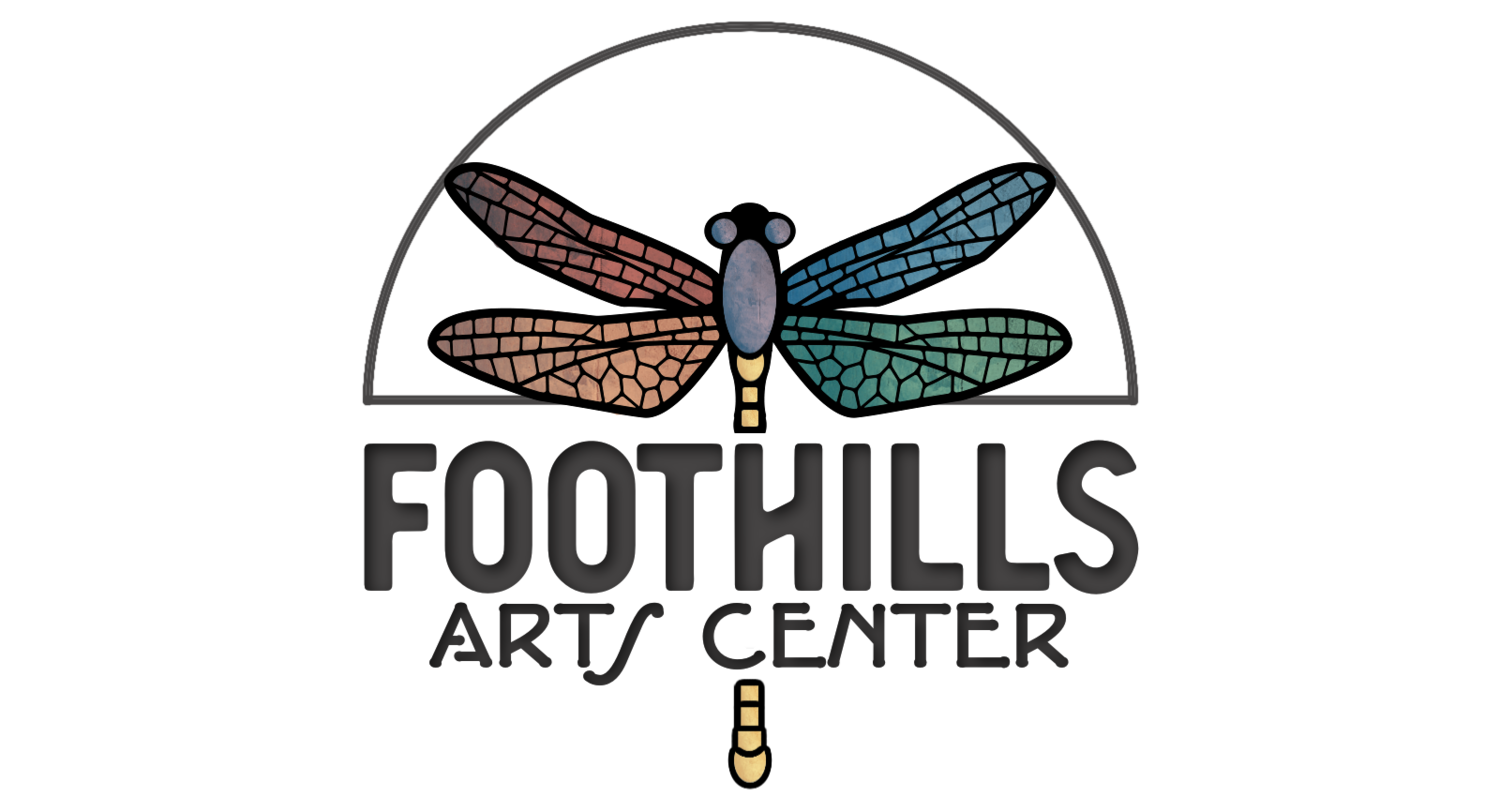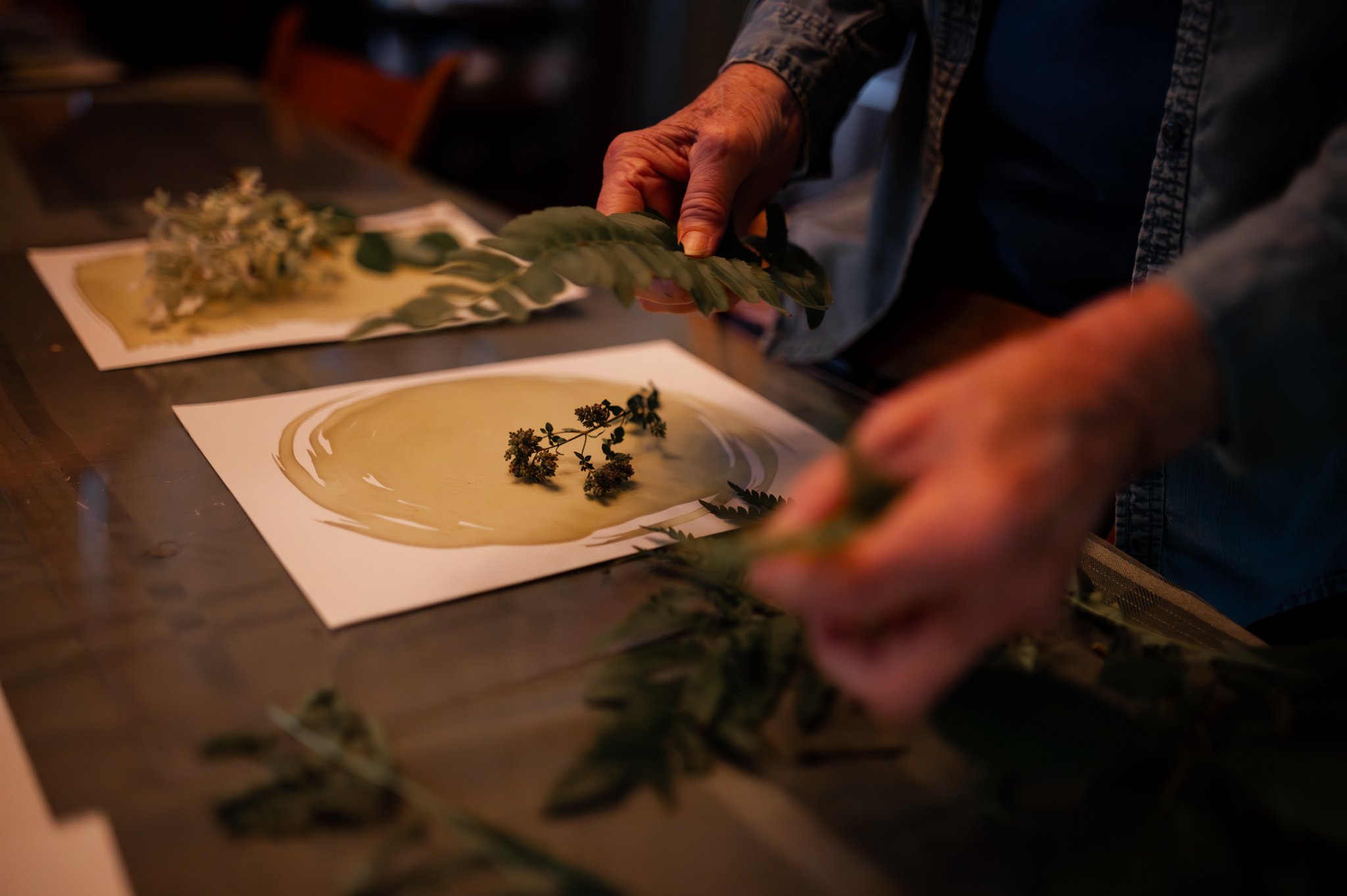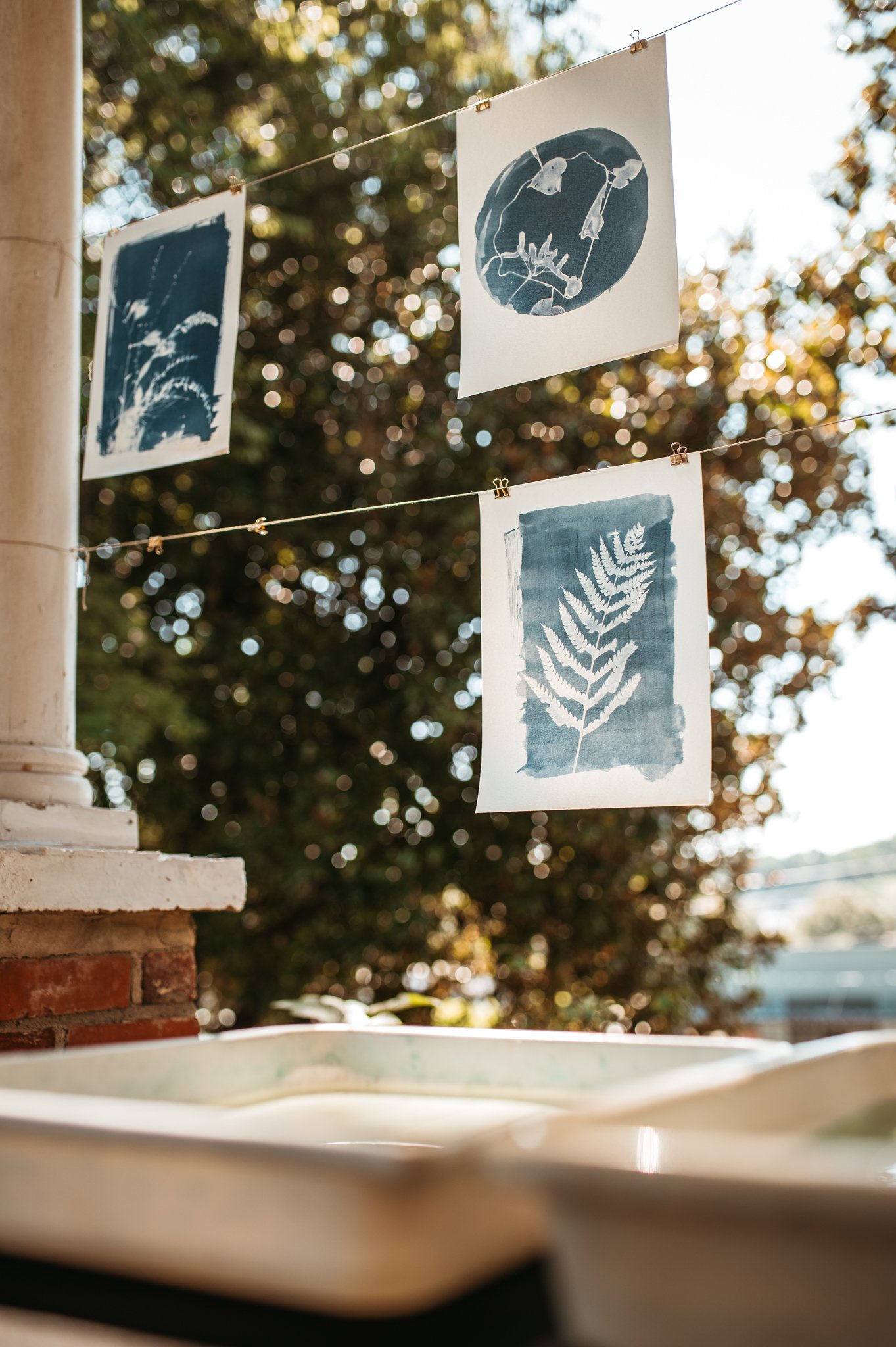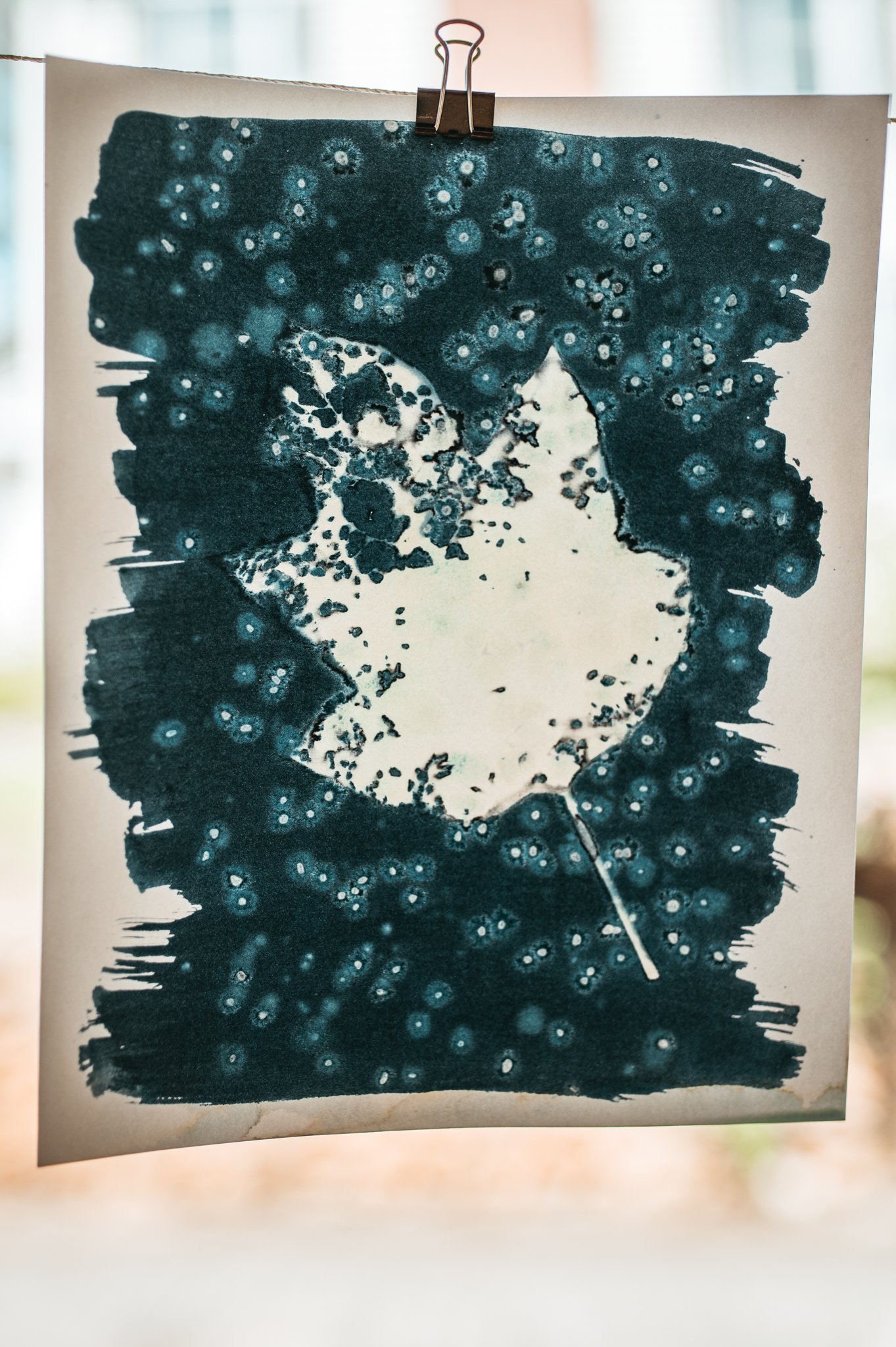| classes | discovering the historic beauty of cyanotype
| image | materials and examples at the ready for the first FAC cyanotype workshop with instructor Laurie Schorr | image credit | Sydney Sieviec
Cyanotype, a photographic printing process known for its distinctive blue prints, has a rich and fascinating history that spans over a century. This alternative photographic technique has evolved from its inception in the 19th century to become a unique and enduring artistic medium. Whether you're a seasoned cyanotypist or a newcomer to the medium, exploring the history of cyanotype can deepen your appreciation for this unique and enduring photographic process.
| early origins
Cyanotype was invented by Sir John Herschel, a British astronomer and scientist, in 1842. Herschel was seeking a way to reproduce his astronomical notes and diagrams. He discovered that by coating paper with a mixture of potassium ferricyanide and ferric ammonium citrate, he could create a light-sensitive material that produced blue images when exposed to sunlight.
| scientific and architectural applications
Initially, cyanotype found practical applications in scientific fields. It was used for creating blueprints of architectural and engineering plans, earning it the nickname "blueprint." This application was particularly valuable in the late 19th and early 20th centuries for reproducing technical drawings.
| artistic adoption
Cyanotype's unique aesthetic qualities and ease of use attracted artists and photographers in the late 19th and early 20th centuries. The technique's distinctive blue hue and the ability to create photograms (images made by placing objects directly on the treated surface) contributed to its popularity among the avant-garde and alternative photographic communities.
| anna atkins’ botanical studies
One of the earliest practitioners of cyanotype as an art form was Anna Atkins, an English botanist. In the 1840s, she used cyanotype to create the first book illustrated with photographic images, "Photographs of British Algae: Cyanotype Impressions." This pioneering work marked a significant step in the history of photography and cyanotype's role in documenting the natural world.
| 20th century revival
Although other photographic processes eventually surpassed cyanotype in popularity, the technique experienced a resurgence in the late 20th century. Modern artists and photographers rediscovered cyanotype as a unique and expressive medium. Its simplicity and distinct blue tones allowed for creative experimentation and a revival of interest in alternative photographic processes.
| contemporary cyanotype
Today, cyanotype continues to be a beloved and respected form of alternative photography. Artists, photographers, and educators around the world use cyanotype to create striking images, photograms, and unique art prints. Its enduring appeal lies in its historical significance, accessibility, and the distinctive aesthetic that comes from the deep blue coloration.
(images left to right, below, show the process of cyanotype from beginning to end)








